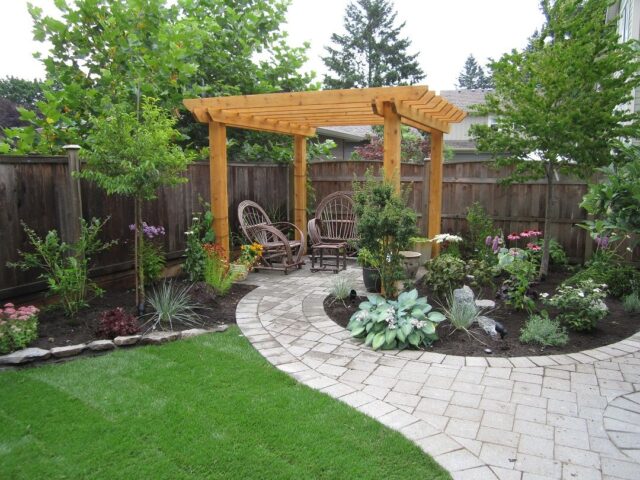
Where to get inexpensive materials for the arrangement of the outdoor space?
In order to carry out the improvement of the territory of the site with minimal costs, building materials are bought at a low cost. In most cases, it is used brick or building blocks, a flitch. For some materials, you don’t have to pay money at all -all that is stored in sheds and pantries, occupying a useful place.
As suggested by decksforlife.ca, a good solution also for the outdoor space will be decking, it helps to create a unique ambiance and doesn’t cost a lot.
1. Flowerbeds made of used materials
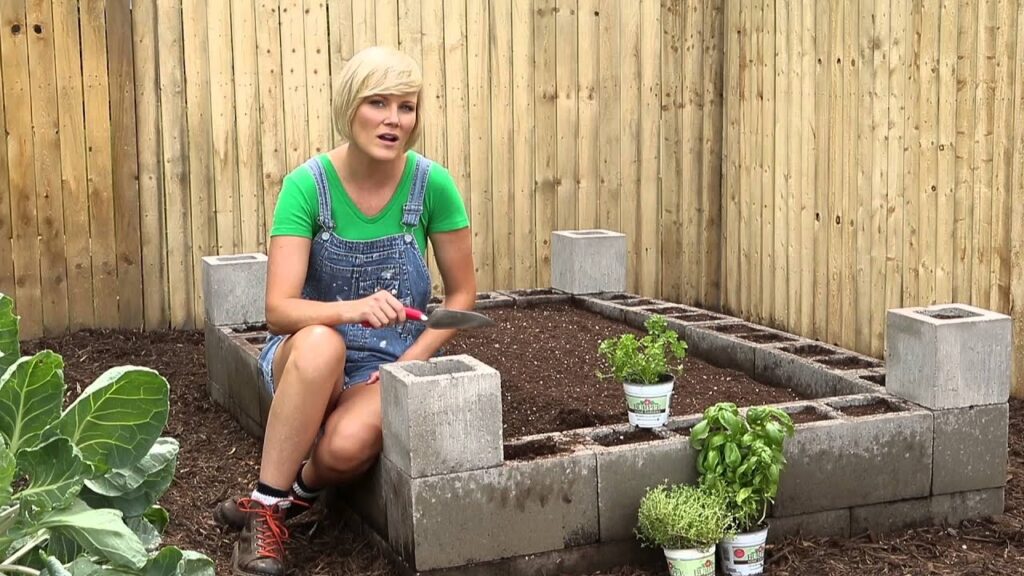
The lumber remaining after the construction of a residential building is used to create raised rows for growing strawberries, herbs, vegetables. Are selected boards of the same width, a rectangular-shaped box is knocked down directly on the ground, filled with fertile soil, and any garden can be planted.
This method of growing plants has its advantages. Due to the fact that the rows are at a certain height, it is easier to care for them. According to this principle, raised flowerbeds are arranged: a place near the fence or porch is fenced with boards, and annuals, perennials, decorative shrubs, or trees are planted inside.
What else can serve you as a flower bed:
- Slate and wave flat;
- Ceramic, cement-sand tile;
- Building blocks: foam concrete, cinder block, shell rock;
- Can be used brick, halves.
2. Cheap walkways
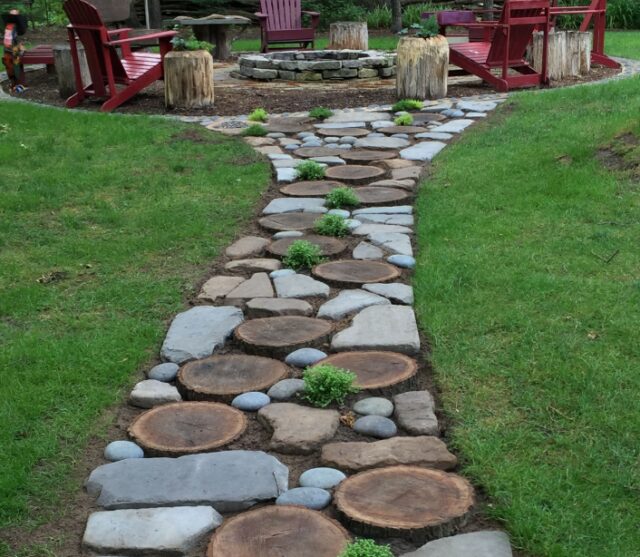
Garden paths can be made from old building materials. The best is brick left after disassembling buildings. The fact that it was in use speaks in its favor – it has already withstood the difficult climatic conditions for several decades and has proved its strength. In the next 5-10 years, until the funds accumulate for a new coating, it will still survive.
You can make flooring from the boards. Across the future paths with an interval of 60 – 90 cm can be laid wooden blocks. Its length is equal to the width of the path. Boards are packed on top of the bars, and the rustic-style path is ready. When you are choosing boards, you should check its strength so that during the future walk will not occur any “accident”.
Tip. If there are no boards, but there are logs, you can make a transverse cross-section of the tree and use it to arrange paths. It’s impossible to put them close to one another because of the roundness of the configuration, and this is not necessary. The main thing is that you can walk on them after the rain without getting dirty.
The paths made of plastic bottles look original. You need to pick up bottles of the same capacity, fill them with sand, and dig in (with the neck down) in the form of a curb on each side of the path. The inner space is covered with sand or gravel and compacted – and as a result, you can walk gently, and the water quickly leaves, and the dirt does not accumulate.
3. Fence from improvised materials
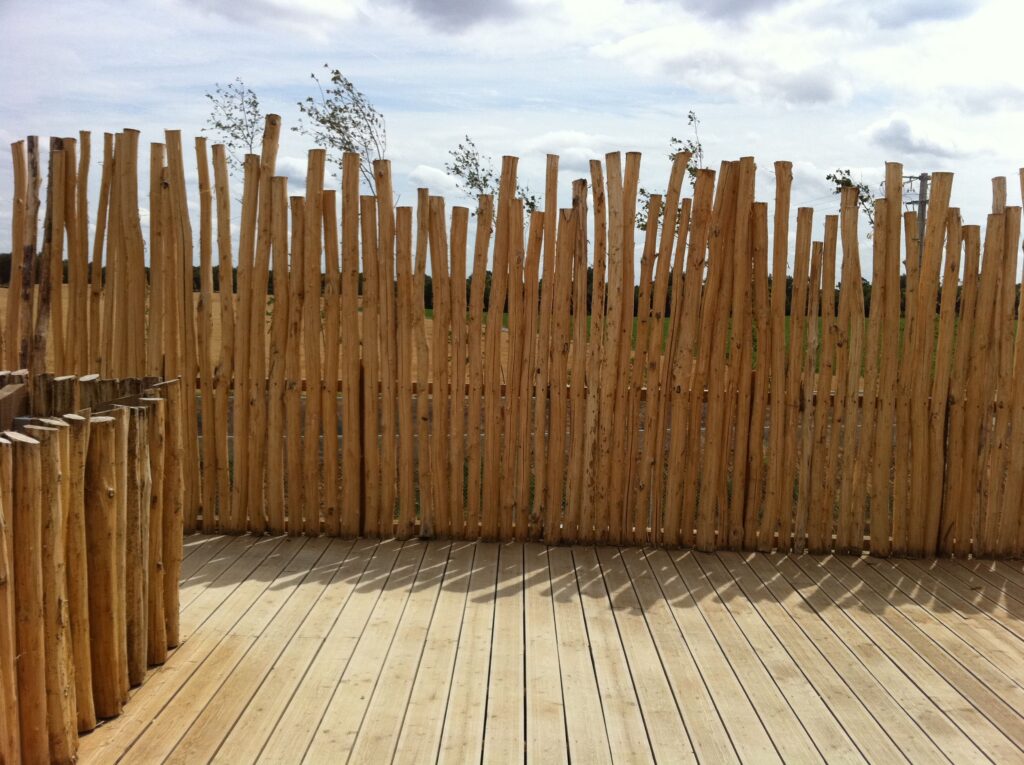
The construction of the fence can be made from what is available in sufficient quantity. The budget material is the thin branches of forest trees. Pegs are put into the ground, the height of each peg is equal to the height of the fence plus 20 – 30 cm (this measurement depends on how much it will be in the soil), and are braided by flexible rods, best of all willows. If the rods are very thin, it is better to take a few pieces. Thicker branches with a thickness of 2 – 3 cm are woven one by one.
Each subsequent transverse part should be located on the opposite side of the upright part. Thanks to this alternate sequence, weaving will be more durable. For reliability, some rods are fixed with wire.
Fences from old-fashioned car tires are very popular. They are dug into the soil in the form of a border or laid flat on top of each other in 3-4 rows. Applying the second method, you can combine the fence with a flower bed, fill with the earth the upper tires, and plant something in them.
A tire fence or wattle fence is not suitable for large-scale fencing of the territory, but it can be used for zoning areas.
4. Flowerbeds
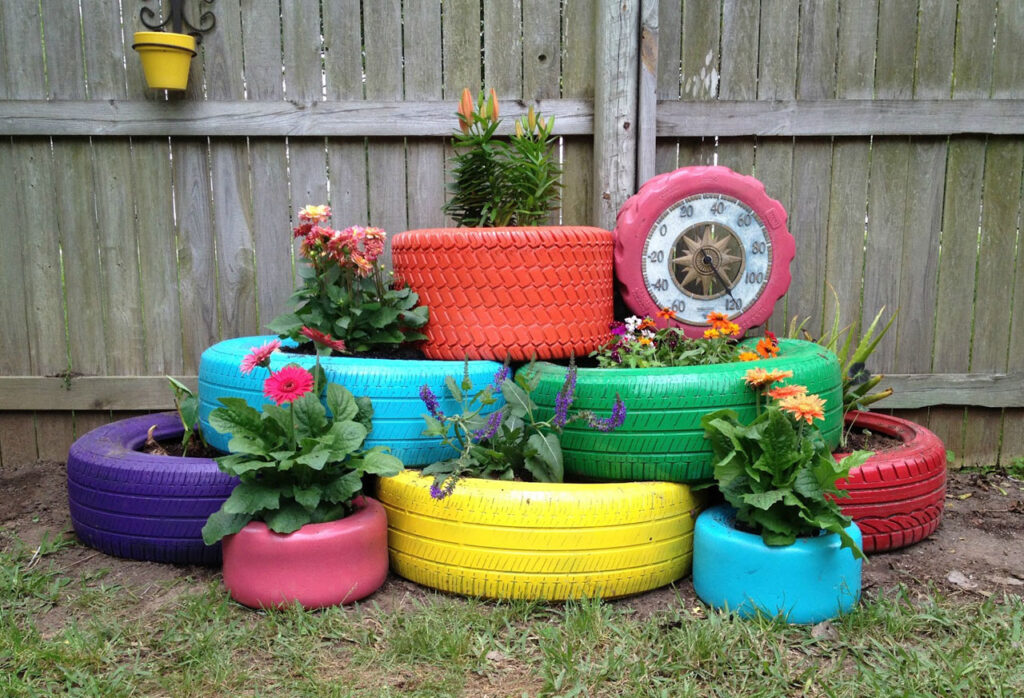
It is easy to turn an unnecessary baby carriage, furniture and sanitary ware into a flower bed. The easiest way to do this is with furniture equipped with drawers: the ground is poured into drawers, cabinets and tables, and flowers are planted.
Unexpectedly, a washbasin can act as a flower bed. In the case, it is not necessary to wait for the seeds to sprout and then the flowers to sprout. You can simply put inside a pot with an already developed flowering plant.
A flower cart mounted on a green lawn looks very original. It is a worthy decoration not only for economical reasons but also for a sophisticated, refined landscape design decision.
Rubber shoes make excellent hanging flowerpots. A layer of expanded clay is poured inside, fertile earth, and in the end, is planted ample plant in the finished “pot”. Such an impromptu flowerpot is hung on a hook-driven into a fence, a barn wall, or simply on a lower tree branch. It remains only not to forget in time to water the flower.
5. Pond
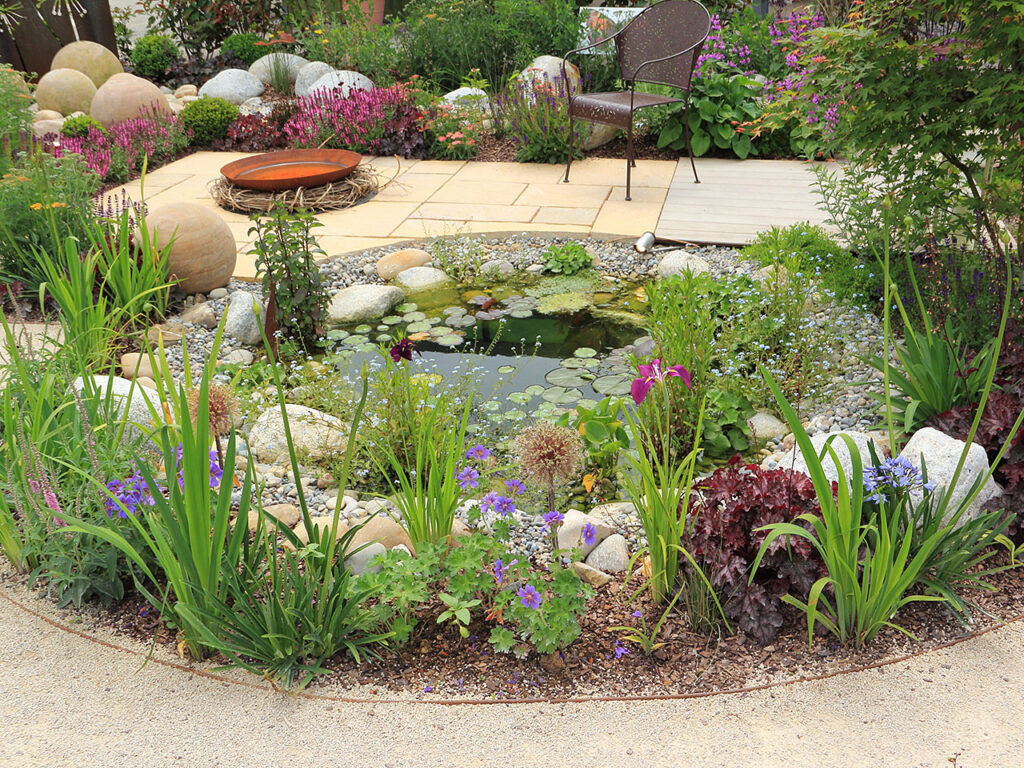
Decorate the landscape with a pond, this is not the prerogative of richly decorated manors. You can make a pond from an old bathtub or another vessel, for example, a large basin, a plastic barrel. The tank is dug into the ground, filled with water, and lined with stones. Around the reservoir are planted moisture-loving plants.
If there is no suitable container, simply excavate a pit of the right size, its bottom and walls covered with a dense plastic surface, the edges of which should be pulled out and pressed down by stones. Pour inside water, and the pond is ready. In order not to buy garden figures, you can run into the pond children’s water-themed toys: ducks, frogs, boats. It even is suitable for a rubber ball or a rubber ring for swimming.







